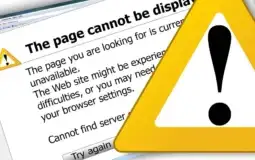Businesses of all sizes must apply technical SEO in today’s competitive internet environment. A website’s visibility and ranking in search engines can be improved by strengthening its content, structure, and on-page optimization strategies.
While there are many factors that can influence a website’s ranking position, some of the most important technical SEO factors include site architecture, page speed, broken links, duplicate content, metadata, keyword cannibalization, and more.
10 Important Technical SEO Elements
Identify crawl errors
If you’re serious about improving your website’s search engine rankings, you need to conduct a technical SEO audit. This involves identifying and addressing any errors that might be preventing your site from being properly indexed and ranked by Google and other search engines.
One of the best ways to identify crawl errors is to run a crawl report. If you see any pages that are not being crawled, this is a clear indication of an issue with those pages that need to be addressed.
Verify XML sitemap
Sitemaps are an essential part of SEO but are often neglected. Once you’ve created and submitted a sitemap, it’s super important to check the status to ensure that it’s being processed correctly.
To check the status of your XML sitemap in Google Search Console:
- Log in to Google Search Console.
- Click on “Sitemaps” in the left-hand menu.
- Under the “Your Sitemaps,” option, find the sitemap and click on “View.”
- Here you’ll see whether your sitemap is “submitted,” or have a “parsed error”.
Improve site load time
Another critical aspect of a technical SEO audit is checking the site’s load time. A slow-loading website can frustrate users visiting your website and cause them to leave before they’ve had a chance to explore your content or buy your products. Worse yet, a slow website can also hurt your ranking in search results.
Several factors can affect your website’s load time, including the size of your pages, the number of requests made to the server, and the hosting you’re using. You can use tools like Google PageSpeed Insights or Pingdom to find the load time of your website.
Run keyword cannibalization Audit
One common issue uncovered during a technical SEO audit is keyword cannibalization. This occurs when multiple pages on a website target the exact keywords, resulting in cannibalization of search engine traffic.
There are a few ways to determine if your website is experiencing keyword cannibalization. One method uses the Google Search Console’s “Search Queries” report.
Suppose you notice that one or more pages are receiving a high number of impressions but few clicks; this could indicate that those pages are cannibalizing traffic from other pages targeting the exact keywords.
Verify duplicate metadata
Duplicate metadata can plague a website and cause serious SEO issues. For example, when two pages have the same title tags, description tags, and header tags, the search engine will not know which page to rank in the search results. This can lead to lower click-through rates and a loss of potential visitors.
It is super important to check for duplicate metadata during a technical SEO audit to avoid this issue. This can be done using various tools, such as Screaming Frog or Google Search Console. If duplicate metadata is found, it should be cleaned up immediately to avoid negative impacts on the website’s SEO.
Find site-wide duplicate content.
Checking for site-wide duplicate content is one of the most critical steps in a technical SEO audit. This will help you identify any potential issues with content duplication on your website that could cause you to lose traffic and rankings. There are a few different ways to check for duplicate content, and the best way to do it will depend on your website’s setup and structure.
One of the easiest ways to check for duplicate content is using a Copyscape or Siteliner. These tools can scan your website for copies of pages or text that have been published elsewhere online. If you find any instances of duplicate content, you’ll need to take steps to fix them.
Find broken links
Another vital element of a technical SEO audit is checking for broken links. These can hurt your site’s ranking and cause users to leave your site. You can use various tools to check for broken links, including Screaming Frog, Ahrefs, and Check My Links. These tools will help you identify broken links on your site and fix them.
Check HTTPS status codes.
HTTP status codes indicate whether a web page was successfully delivered to a user’s browser. There are five main HTTP status codes:
200 – “OK” – The request was successful, and the web page was delivered as expected.
301 – “Moved Permanently” – When a user tries to access a page on the internet and gets the message, “301 – Moved Permanently,” you might be wondering what this means. This error code means that the website or page has been moved permanently and can’t be found. If you’re looking for a specific website or page, chances are that it’s been moved and you’ll have to search for it using different methods.
302 – “Found” – The requested web page was temporarily moved to a new location. The old site will still be available.
400 – If you are seeing an HTTPS status error code 400, it might be because your SSL/TLS certificate is not properly configured on your web server. You will need to verify that the certificate is valid and that the web server’s trust store has been updated to fix this issue.
Check mobile-friendliness
According to Google, mobile-friendliness is a ranking factor for search. So if your website isn’t optimized for mobile devices, you’re likely losing out on traffic and business.
The good news is that optimizing your website for mobile devices is relatively easy and can be done in a few simple steps. Here are the most critical elements of a technical SEO audit for mobile-friendliness:
- Use responsive design: Responsive design is the most efficient way to ensure that your website looks great on all types of devices. It’s also Google’s preferred method for optimizing sites for mobile devices.
- Use legible fonts: Many people view websites on their phones while they’re out and about, which means they may not have perfect vision. Use readable fonts so that everyone can read your website easily.
- Set up an amp version of your website.
Verify robots.txt file
Robots.txt file tells web crawlers which pages to crawl and index and which ones to ignore. Therefore, it’s essential to verify that the file is configured correctly and includes all the necessary pages. Otherwise, you could be inadvertently hiding valuable content from search engines.
Final Words
In conclusion, employing a technical SEO strategy is essential for businesses of all sizes in today’s online world. By focusing on improving the visibility and ranking of your website, you can compete with larger businesses and attract more customers. So don’t wait any longer and get started on your technical SEO today!



